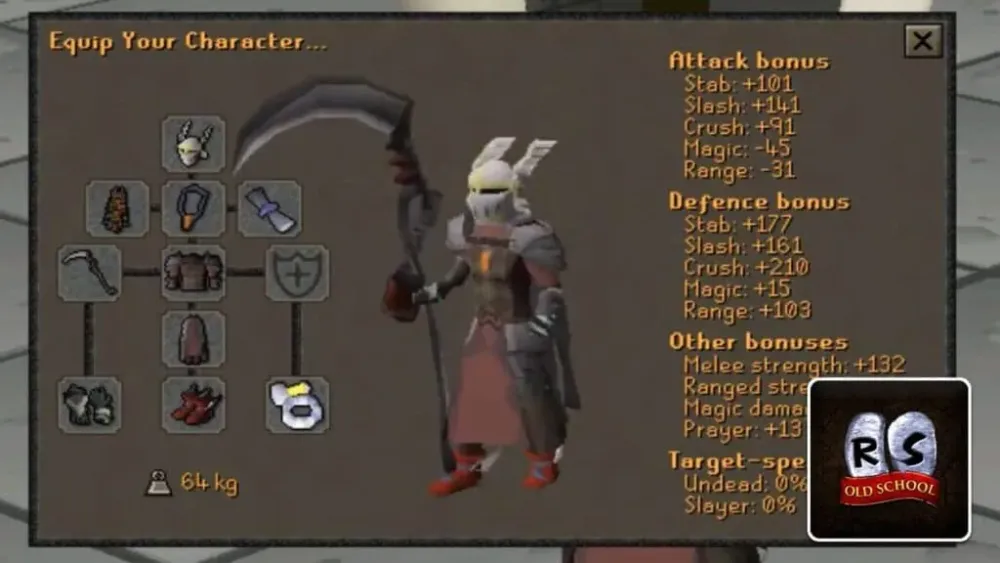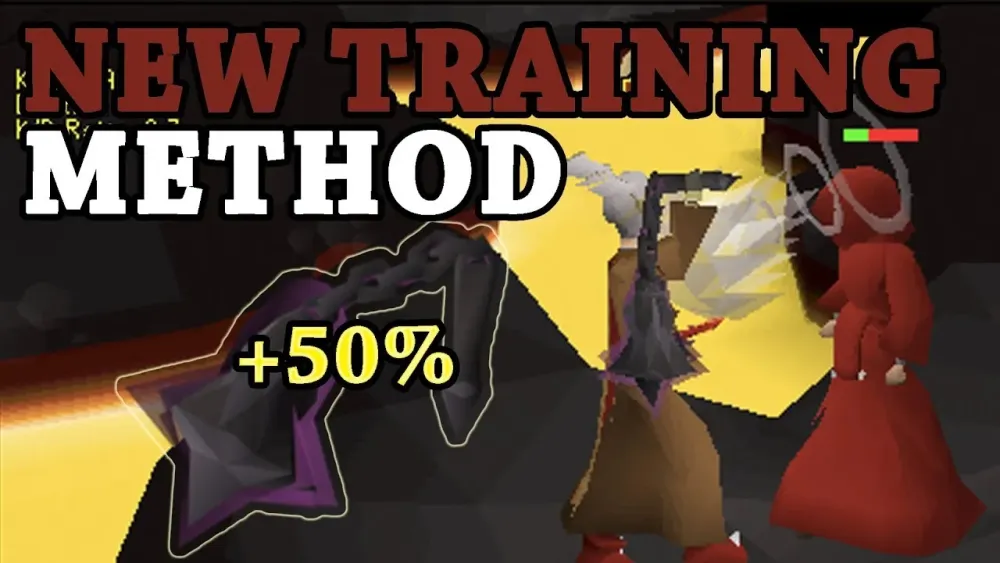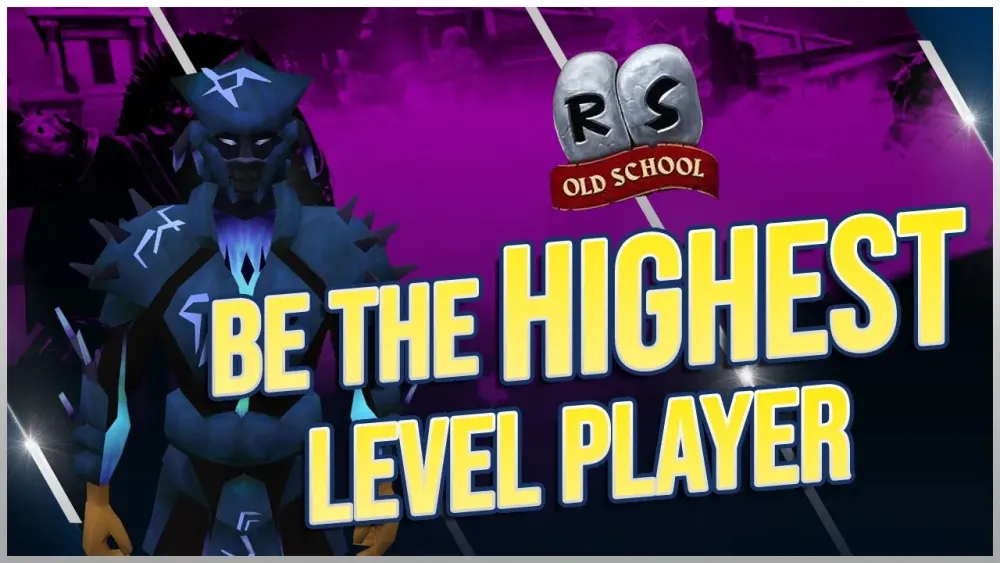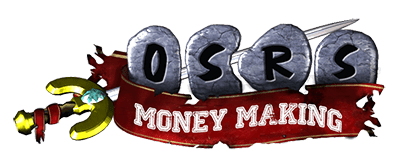Your cart is empty
OSRS Efficient Melee Training Order for Fast Combat Levels

Training melee skills in Old School RuneScape (OSRS) is a core part of building a strong account, whether you’re aiming for PvM, PvP, or just maxing out your combat stats. Melee consists of three skills—Attack, Strength, and Defence—each contributing to your combat effectiveness in unique ways. This guide outlines the most efficient melee training order, prioritizing experience rates and practical progression to help you level up quickly. Whether you’re a new player or a veteran optimizing a fresh account, this roadmap will save you time and effort.
The order in which you train Attack, Strength, and Defence impacts your experience per hour (XP/hr) and overall efficiency. Attack improves accuracy and unlocks better weapons, Strength boosts your max hit for faster kills, and Defence reduces incoming damage, allowing longer training sessions. Training them haphazardly can slow your progress, so a structured plan is key to maximizing damage output and minimizing downtime.
Understanding Melee Combat Stats
Before diving into the training order, let’s break down what each skill does:
- Attack: Increases hit accuracy and unlocks higher-tier weapons (e.g., Rune Scimitar at 40, Abyssal Whip at 70).
- Strength: Boosts max hit, directly increasing damage per second (DPS) and XP/hr.
- Defence: Reduces the chance of taking damage, useful for tanking but less critical for early efficiency.
Prioritizing offensive stats (Strength and Attack) over Defence often yields faster XP gains, especially when fighting low-defence monsters like crabs or during Slayer tasks.
Early Game Melee Training (Levels 1–40)

The early game is all about skipping slow, low-level grinds and setting up for efficient mid-game training. Quests and low-risk monsters are your best friends here.
Questing for Fast XP
Completing specific quests early on grants massive XP boosts, letting you jump levels without manual grinding. Here’s a recommended quest order for melee XP:
| Quest | Attack XP | Strength XP | Defence XP | Requirements |
|---|---|---|---|---|
| Waterfall Quest | 13,750 | 13,750 | 0 | None |
| Fight Arena | 12,175 | 0 | 0 | None |
| Vampire Slayer | 4,825 | 0 | 0 | None |
| Tree Gnome Village | 11,450 | 0 | 0 | None |
| The Grand Tree | 18,400 | 0 | 0 | 25 Agility |
Completing these quests can get you to around 45 Attack, 37 Strength, and minimal Defence XP, skipping hours of tedious low-level training. Waterfall Quest is a must-do—it boosts you to level 30 Attack and Strength from level 1 with no requirements.
Training on Low-Level Monsters
If questing isn’t your style or you need to fill gaps, train on monsters with high HP and low offence. Recommended spots include:
- Chickens (Lumbridge): Levels 1–10, safe and easy, with feather collection for minor profit.
- Cows (Lumbridge): Levels 10–20, decent HP for XP, and cowhides for cash.
- Rock Crabs (Rellekka): Levels 20–40, high HP (50), low defence, and aggressive for AFK training.
Use the best scimitar you can equip (e.g., Iron at 10, Mithril at 20, Adamant at 30). Focus on Strength to boost max hits, but raise Attack to 40 by the end of this phase to unlock the Rune Scimitar, a game-changer for DPS.
Mid-Game Melee Training (Levels 40–70)

With a Rune Scimitar in hand and decent stats, mid-game training focuses on scaling XP rates through better gear, monsters, and Slayer integration.
Optimal Training Order
At this stage, prioritize Strength to 60, then Attack to 60, and finally Defence to 40–50 if needed. Strength increases your max hit significantly, boosting kill speed on low-defence targets. Attack to 60 unlocks the Dragon Scimitar, a major DPS upgrade. Defence can lag unless you’re tackling tougher Slayer tasks or PvM.
Best Training Spots
Here are the top mid-game training locations:
- Sand Crabs (Crabclaw Isle): Similar to Rock Crabs but less crowded, with 60 HP for solid XP (up to 30k XP/hr).
- Ammonite Crabs (Fossil Island): Higher HP (100) and aggressive, offering up to 40k XP/hr with good gear.
- Nightmare Zone (NMZ): Unlocked after 5 quests (e.g., those above), NMZ allows AFK training with absorption potions and Dharok’s gear for 50k+ XP/hr at higher stats.
NMZ becomes viable once you have 60+ Strength and access to decent gear like Obsidian armor or Barrows gloves. Use Strength potions and Piety prayer (unlocked via quests like King’s Ransom) to boost XP rates.
Gear Progression
Upgrading gear is crucial for efficiency. Here’s a mid-game setup:
- Weapon: Rune Scimitar (40 Attack) → Dragon Scimitar (60 Attack, after Monkey Madness I).
- Armor: Rune armor (40 Defence) or Obsidian armor (60 Strength, 10% melee accuracy boost).
- Amulet: Amulet of Strength (budget) or Amulet of Glory (better overall stats).
- Cape: Fire Cape (after Fight Caves) or Obsidian Cape.
A Berserker Necklace with an Obsidian Sword can outshine the Dragon Scimitar against low-defence targets, so consider it for crabs or NMZ.
Late-Game Melee Training (Levels 70–99)
Late-game training is about maximizing XP/hr and preparing for endgame content like raids or bossing. Slayer and NMZ dominate here, with specialized gear pushing rates to new heights.
Strength-First Approach
Push Strength to 99 first, as max hit increases have the biggest impact on DPS and XP. Then, train Attack to 90+ for weapons like the Ghrazi Rapier or Osmumten’s Fang (82 Attack). Defence can follow to 70–99, depending on your goals (e.g., 70 for Barrows armor, 80 for Torva).
Slayer for Dual Training
Training through Slayer is highly efficient, as you level melee and Slayer simultaneously while earning profit. A Slayer Helm or Black Mask boosts damage by 16.67% on-task, massively increasing XP. Top tasks for melee include:
- Dust Devils: Low defence, high HP, and profitable drops (70k+ XP/hr with Piety).
- Nechryaels: High XP with Death Spawns, especially in Catacombs of Kourend (80k+ XP/hr).
- Ankou: Easy to AFK, decent loot, and high HP (60k XP/hr).
Use a whip or rapier for accuracy and speed, switching to a Saradomin Sword or Dinh’s Bulwark for multi-target tasks like Nechryaels.
Nightmare Zone Optimization
NMZ remains a powerhouse for late-game training, especially with Dharok’s armor at low HP (using a Rock Cake or Locator Orb) for massive hits. Expect 100k–130k XP/hr with this setup:
- Weapon: Abyssal Whip or Saradomin Sword.
- Armor: Full Dharok’s, Berserker Necklace, Primordial Boots.
- Inventory: Absorption potions, Super Combat potions, Prayer potions.
Choose Hard Rumble with bosses like King Roald or Tree Spirit for high HP and low defence. This method is semi-AFK and scales well to 99.
Advanced Tips for Maximum Efficiency
To squeeze out every bit of XP, incorporate these strategies:
Prayer and Potions
Always use Piety (70 Prayer) or at least Ultimate Strength (31 Prayer) for a massive DPS boost. Super Combat Potions or Super Sets (Attack, Strength, Defence) further enhance stats, increasing XP by 10–20%. Prayer flicking can save potions, but it’s click-intensive.
Specialized Gear and Switches
For specific scenarios, use niche gear:
- Salve Amulet (e): Boosts damage against undead (e.g., Ankou, Skeletons).
- Dragonfire Shield: Essential for dragon tasks to block fire damage.
- Inquisitor’s Mace: Crushes high-defence targets like Tekton in raids.
Switch to Strength training weapons (e.g., Bludgeon) when Attack accuracy is less relevant.
AFK vs. Active Training
Balance AFK methods (crabs, NMZ) with active ones (Slayer, bossing) based on your playstyle. AFK methods like Sand Crabs are great for casual sessions, while Slayer or NMZ with Dharok’s offers top XP for focused grinding.
Conclusion
Efficient melee training in OSRS boils down to prioritizing Strength for DPS, Attack for weapon unlocks, and Defence as needed for survivability. Start with quests like Waterfall Quest to skip early levels, grind crabs or NMZ for mid-game gains, and lean into Slayer or optimized NMZ for late-game XP. With the right gear, potions, and prayer, you can hit 99s faster than ever. Stick to this order, adapt to your goals (e.g., PvP, raids), and you’ll be a melee powerhouse in no time!
